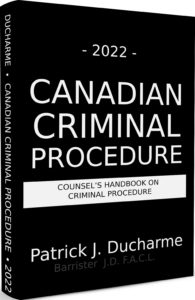Reasonable Doubt
(continued from part 1)
The problem with attempting to define reasonable doubt is that many jurors still struggle with understanding the instructions they receive from the Judge concerning its meaning. Most Judges will tell a jury that proof beyond a reasonable doubt falls much closer to absolute certainty than to proof on a balance of probabilities. In this writer’s experience when the trial Judge attempts to explain reasonable doubt as a doubt that falls much closer to absolute certainty than to proof on a balance of probabilities, juries often deliberate for a while, then return to the courtroom and ask the presiding Judge to explain the concept more clearly or in greater detail.
We have become accustomed to jurors asking questions such as:
What is meant by “much closer”?
75% or 80% closer?
Explain (again) “proof on a balance of probabilities.”
What do you mean by “probable guilt?
Experienced Judges and lawyers are familiar with these types of questions. They are not easy questions to answer. The concept of reasonable doubt cannot be measured in terms of percentages or with a mathematical formula. It may be simpler to advise the jury that each juror needs to be certain, or positive, or without any actual doubt, before they can make a finding of guilt.
The term “beyond a reasonable doubt” has been used for a very long time in our system of Justice. It is a part of our history and our legal tradition. A reasonable doubt is not an imaginary or frivolous doubt. It is not based upon sympathy or prejudice. Instead, it must depend upon reason and common sense. It must logically flow from the evidence or absence of evidence at trial. It is not sufficient for the person deciding guilt or innocence to simply believe the accused is guilty. That belief must be based upon the evidence, and it must satisfy the decision-maker that the evidence proves much more than the accused is probably guilty. If the accused is only probably guilty, the finding should be that he is, in fact, not guilty.

The above is the an excerpt of Patrick J Ducharme’s book, Canadian Criminal Procedure, available at Amazon or in bulk through MedicaLegal Publishing along with Criminal Trial Strategies.
Subscribe to Patrick Ducharme’s Youtube Channel
